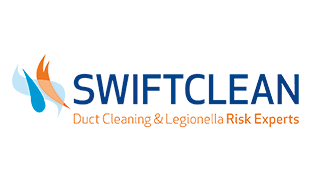Almost 25 years after mandatory surveillance of the superbug methicillin-resistant Staphylococcus aureus (MRSA) bloodstream infections (BSIs) came into practice, the vigilant cleaning of hospitals and other healthcare environment is just as important as ever
Awareness and protocols put into place in the early 2000s raised attention towards the cleanliness, infection prevention control (IPC), and management of hospitals across the country, but this was only half the battle: healthcare-associated infections (HCAIs) – that is, infections contracted as a direct result of a treatment in a healthcare setting – are still a major concern in hospitals, care homes, and the wider healthcare landscape.
2023-24 government statistics show that 74 out of every 100,000 people will contract Escherichia coli (E. coli), with almost one fifth of these cases being diagnosed on the third day after hospital admission (hospital-onset). The good news is that up to 50 per cent of HCAIs are estimated to be preventable, and the application of effective IPC measures, such as cleaning, is paramount in reducing HCAIs.
Healthcare-associated Infections in British hospitals
A report by The Health Foundation (November 2015) tracks HCAIs in England from 2000-2015, as well as offering recommendations to further prevent the rise in infection spreading due to poor sanitation and infection prevention methods. Additional statistics by the European Centre for Disease Control (ECDC) estimate that each year 3.5 million patients develop infections within the European Union and European Economic Area (EU/EEA) as a result of healthcare, with 90,000 of these resulting in death. HCAIs are also expensive. The World Health Organisation estimates each year HCAIs cost €7 billion and 16 million extra days in hospitals for patients, which only increases the chance of infecting other patients and causing an outbreak. HCAIs that received much attention in the UK are MRSA BSIs, notorious in hospitals during the early-mid 2000s, and Clostriodioides difficile (C. difficile), an infection often brought on by antibiotic use that causes symptoms ranging from diarrhoea to life-threatening colon damage. Other common HCAIs include pneumonia and urinary tract infections (UTIs), as they are often correlated with use of invasive devices, like central lines, ventilators, and catheters. HCAIs comprise a wide variety of infections, from those spread through blood, those spread through bodily fluids, and others spread through respiratory droplets. The varied way in which infections can spread begs the need for a comprehensive, all-encompassing method to effective IPC and standardised cleaning protocols to ensure the spread of HCAIs is kept to a minimum, if not eradicated.
Rigorous surveillance, the installation of thorough cleaning practices, and mass media attention have meant that the UK has cracked down on the number of HCAIs. In 2020-21, the total number of E. coli infections decreased by 15 per cent, possibly down to interventions and changes in IPC practices following the COVID-19 pandemic. This number has increased slightly in 2022-23, with 38,757 E. coli infections reported, although 80 per cent of these emerged in the community, not in hospitals. This stands in comparison to 43, 294 E. coli infections recorded in 2019-20.
The call for national cleaning regulations
Mandatory surveillance of MRSA recorded 7,249 cases in its first year, bringing further attention to more rigorous surveillance and mitigation of BSIs: the problem was now quantified, and action was clearly needed. In December 2003, the chief medical officer at the time published the report, ‘Winning ways: working together to reduce Healthcare Associated Infection in England,’ which gave guidance that would later become standard NHS practice and British law. The report emphasised strict aseptic technique when administrating catheters, tubes, and cannnulae to patients, the necessity of durable surfaces that can be easily cleaned, and high standards of hygiene in clinical practice. These are now the pillars of mandatory IPC protocols across the UK.
The following year, NHS England and Wales launched their Cleanyourhands campaign, which turned the tide on common handwashing practice. Rather than letting healthcare professionals assume their hands were clean if visibly so, the emphasis shifted to if hands were safe. When the campaign was launched, the global average rate of hand hygiene was estimated to be around 40 per cent; staff were thus washing their hands roughly half the number of times they should. The cost of the campaign was 0.1 per cent of the cost of HCAIs in England and Wales, and led to a threefold increase in procurement of soap and alcohol handrub. The effects of the campaign can still be seen in hospitals today through alcohol handrub dispensers at all points-of-care.
All NHS trusts were also required to appoint a director of infection prevention and control to provide a direct line of accountability. It is especially important that IPC leadership is distributed throughout an organisation, with accessible managers in all areas: infection, after all, doesn’t just happen in hospitals, but any venue where healthcare is varied out, be that dentist surgeries, care homes, or GP clinics.
Mandatory surveillances were introduced for Glycopeptide-Resistant Enterococci (GRE) (2003), orthopaedic surgical site infections (2004), C. difficile (2007), Methicillin sensitive s. aureus (MSSA) BSIs (2011), and E. coli (2011), as part of efforts to monitor levels of HCAIs in hospitals. Further campaigns that stressed the importance of healthcare hygiene and IPC to reduce HCAIs include ‘bare below the elbow’ guidance to ensure hand decontamination (2007), the Safer Patients Initiative by the Health Foundation (2011), Matching Michigan (2018) to decrease central line infections in over 200 intensive care units (ICUs) in England, as well as Sir Robert Francis’ report into Mid Staffordshire NHS Foundation Trust (2013). Following serious neglect of care and cleaning standards at Stafford hospital 2005-09, the report recommended reviewing staff training programmes and firmer standards of cleanliness and hygiene.
Recurrent outbreaks of HCAIs, differing levels of hygiene standards across trusts, and reports like the Francis inquiry highlighted the need for government legislation to standardise rigorous IPC by embedding it into the law. In 2008, the Department of Health published a report emphasising the importance of cleanliness to prevention infection, stressing the lives lost and the cost of cure: the report estimated it cost between £4,000 and £10,000 more to treat a patient with a HCAI during their hospital stay. The Health and Social Care Act (2008) made the Care Quality Commission (CQC) the regulator of all health and adult social care services across England, and all providers of healthcare are required to register with the CQC to comply with their fundamental standards. The CQC’s fundamental standards, now revised and updated several times since 2008 (including in 2014 following changes proposed by Francis), detail 16 essential standards that care must never fall below, including principles on patient safety, the cleanliness of healthcare settings and their equipment, and that all treatment be appropriate: this is an important detail in the face of growing antimicrobial resistance (AMR).
The National Infection Prevention and Control Manual
A key milestone in effective IPC was the publication of the National infection prevention and control manual (NIPCM) for England (2022), which details the implementation and compliance with criteria set out in the Health and Social Act 2008, Code of practice on the prevention and control of infections and related guidance. The NIPCM is an adoption of a Scottish manual of the same name, published ten years prior, and details comprehensive cleaning protocols to ensure IPC in healthcare settings, providing a standardised approach for all the UK. The NIPCM details ten elements of standard infection control precautions (SICPs), and gives detailed instructions on when to wash hands with soap and water and when to rub hands with alcohol gel, correct respiratory and cough hygiene, as well as appropriate use of personal protective equipment (PPE), which must always be close to the point of use and disposed of immediately if single-use.
Further instructions include the safe management of care equipment, which must be either sterilised or disposed of immediately, to prevent the spread of possible infections from one patient to another, as well as the safe management of the care environment. The NIPCM instructs that the care environment must be: “visibly clean, free from non-essential items and equipment to facilitate effective cleaning”, as well as “well maintained, in a good state of repair, and with adequate ventilation for the clinical speciality”.
Linen must be managed and sorted properly according to categories of cleanliness, and blood and other bodily spillages must be cleaned immediately by staff trained to undertake this safety to prevent the transmission of infection and viruses. Waste should be disposed quickly and safely, and in the correct bag: yellow stripe for offensive waste and orange for clinical infection waste. Following the Health and Safety (Sharp Instruments in Healthcare) Regulations in 2013, healthcare organisations must have arrangements for the safe use and disposal of sharps, such as sufficient provision of information and training to employees. This is especially impertinent when improper use of equipment such as needles could result in the transmission of bloodborne viruses like MRSA and human immunodeficiency virus (HIV).
The Royal College of Nursing offers further instruction on these principals, such as appropriate use of indwelling devices in patients, and maintaining accidental exposure to blood-borne viruses, both of which are key in both the prevention and mitigation of infections in patients, visitors, and healthcare staff. A report after 90 patients died in C. difficile outbreaks 2004-2006 found that, alongside poor cleaning standards, one of the failings in IPC was having patients’ beds too close together. C. difficle cannot be screened like MRSA, making cleanliness and correct IPC paramount.
The stakes of proper cleaning practices
Without effective cleaning in healthcare settings, methods against IPC weaken, which increase the rate that HCAIs can spread through hospitals and other healthcare venues. One of the greatest risks of high HCAI rates is the increase of AMR infections, which are much harder and much more expensive to treat, as conventional antimicrobial courses are no longer effective. No new antibiotics have been discovered since the 1980s, and yet AMR infections cause an estimated 700,000 deaths per year. Due to overuse and abuse of antimicrobial treatments, one in three patients in hospitals in England are on antibiotics at any one time, yet 2019 figures revealed that 20 per cent of all antibiotic prescriptions in primary care were inappropriate.
The Royal College of Nursing estimates that 10 million lives each year could be lost as a result of AMR by 2050 if this problem remains unaddressed, alongside a cumulative cost of $100 trillion. Despite successes in decreasing the persistence of MRSA in hospitals, C. difficle and E. coli infections are still common, with 45,885 cases of E. coli BSIs diagnosed in 2015 rising to 50,400 in 2017.
In 2019, the UK was the first country to set an ambition to reduce the number of AMR infections, and published two reports: a five-year plan and a twenty-year plan, following the World Health Organisation’s Global Action Plan on Antimicrobial Resistance (GAP). Both plans stressed the root causes of the issue: preventing the infections themselves, and called for thorough decontamination of medical devices, proper training for health and social care workers in practices like hand hygiene and aseptic technique, and the use of surveillance systems to monitor and recognise infections.
The rollout of competent IPC knowledge, training, and boards is vital for hospitals to properly implement these procedures, and so the UK also recommended board-level leadership with a combined IPC and antimicrobial stewardship role, facilitating and supporting an open learning culture for all health and social cares staff. These, in turn, strive towards a vision ‘of a world in which antimicrobial resistance is effectively contained, controlled, and mitigated’ by 2040.





